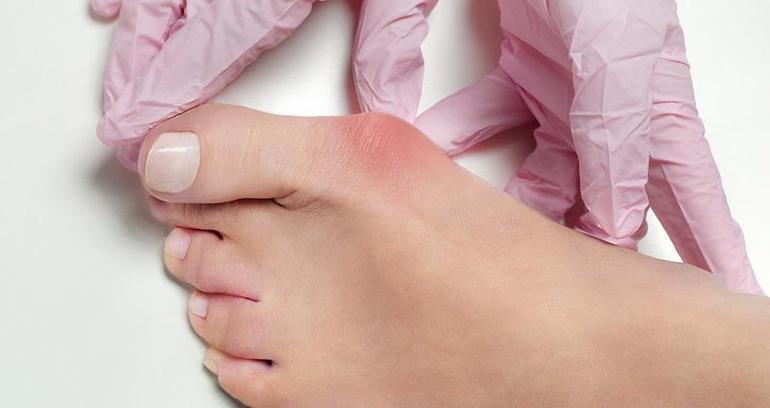The Centers for Advanced Orthopaedics is redefining the way musculoskeletal care is delivered across the region with locations throughout Maryland, DC, Virginia and Pennsylvania.
Bunions – Conservative vs. Surgical Treatment

When it comes to bunions, there are many potential treatment options that can help alleviate symptoms. But with so many choices, it can be difficult for patients to make a decision. In this article, we are going to talk about conservative vs. surgical treatment options for bunions and when to consider each.
First – Get an Accurate Diagnosis
Before you start to consider treatment options, it’s important to get an accurate diagnosis from a physician (preferably an orthopedic specialist who focuses on foot and ankle conditions). A physician should be able to diagnose your bunions with a simple physical exam coupled with a review of your medical history.
Conservative Treatment Methods
For many patients suffering from bunions, conservative treatments are the first course of action. Conservative treatments for bunions may include:
- Over the counter or prescription pain killers
- Lifestyle changes
- Orthotics
- Injections
These methods are often recommended first because they are the least invasive. However, many of these conservative options only treat the symptoms of bunions and not the bunions themselves.
Surgery for Bunions
When conservative treatments fail to effectively relieve the symptoms brought on by bunions, surgery is the next step to consider. While many patients try to avoid surgery at all costs, a minimally invasive bunion procedure may be the best treatment option for long-term bunion pain relief.
Innovative New Bunion Procedure
Bunions can be painful and debilitating and conservative methods often fail to provide long-term pain relief. Dr. Neufeld has developed a pioneering bunion procedure that is minimally invasive. What does that mean? It means less pain and faster recovery for the patient! This procedure is done on an outpatient basis, meaning you don’t even need to stay overnight in the hospital. You can be back at home recovering hours after the procedure. Contact us today to learn more about this innovative procedure and whether you are a good candidate!